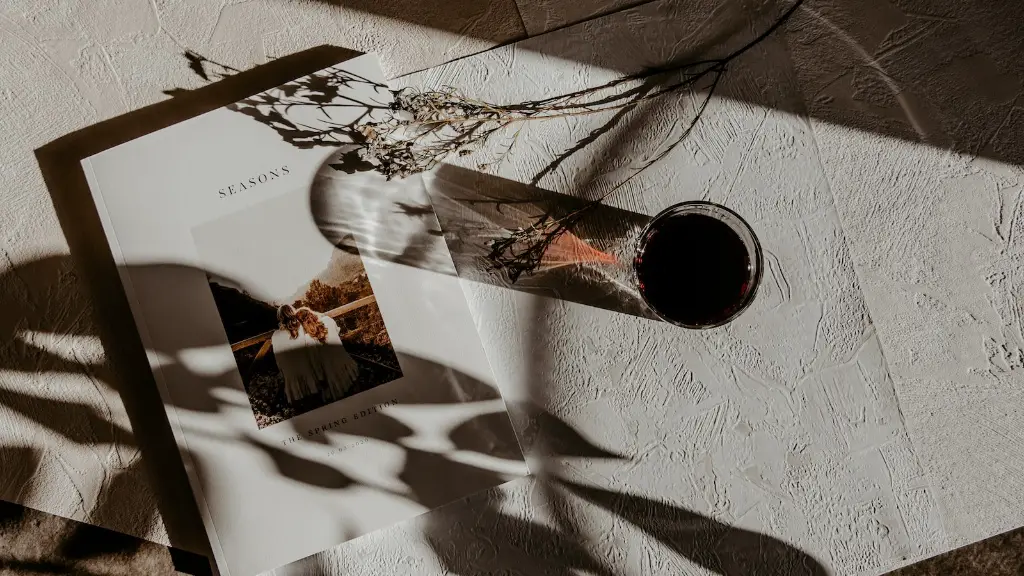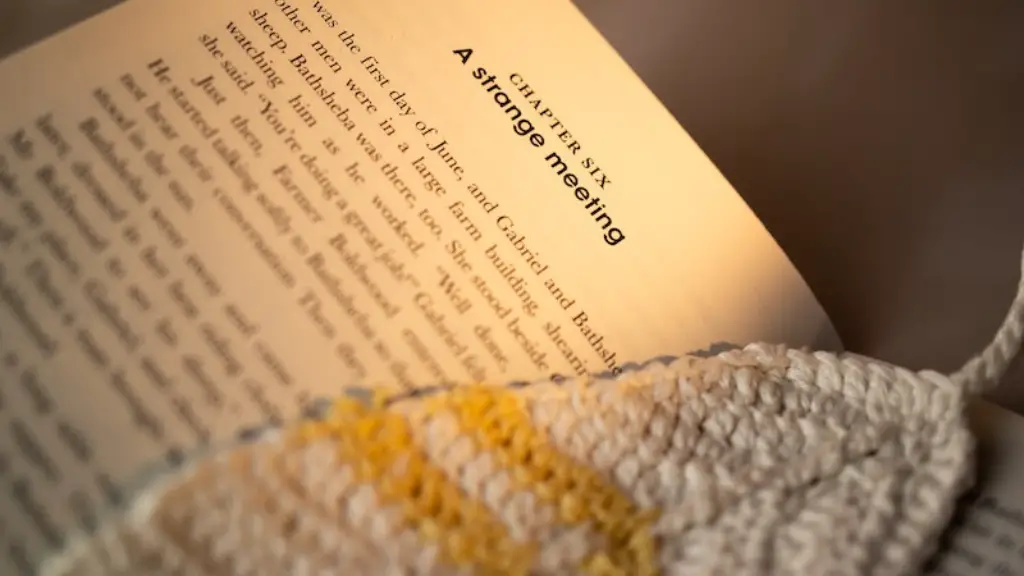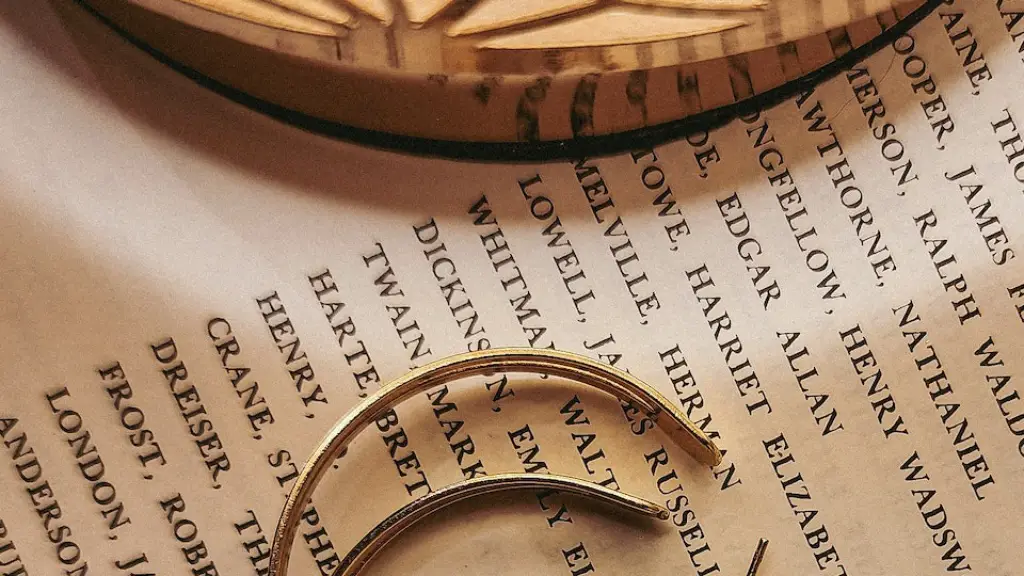Narrative poetry is a form of literary art. It tells a story and contains elements of structure, characterization, language, and emotion. The aim of narrative poetry is to entertain, evoke feelings, and impart ideas. It can be either a short story of one or more stanzas, or a lengthy poem in the form of a monologue, lyrical poem, or pastiche. In narrative poetry, the poet uses the techniques of versification, rhyme and meter, to weave a story and paint vivid images.
The narrative poem can be used to explore many different themes. It can be used to express the feelings of love or explore political issues. It can be a reflection of a personal experience or an exploration of the culture around us. Narrative poetry can be a powerful tool to inspire, provoke and motivate. It can also be used to convey a message or to explore ideas in a unique way.
Narrative poetry often follows a traditional form, such as the sonnet or the ode, in which each line is composed of a specified number of syllables and certain rhyming patterns are often employed. However, more modern poets have experimented with alternative forms and styles to give their work a unique voice.
The structure of a narrative poem can vary greatly, but typically there is a protagonist, an antagonist, and a setting or context. The protagonist often faces a challenge, confronts their enemies, and eventually finds a resolution. A narrative poem often contains elements of suspense or surprise.
The artwork employed by the poet is just as important as the narrative of the poem. Different types of literary devices, such as metaphors, similes, and alliteration, are used to capture the reader’s attention and enhance the story. Figurative language is also often used to evoke vivid images and to create feeling in the reader.
The language of a narrative poem also has important effects. By playing with words and sounds, the poet can add rhythm and meaning to a poem and make it come alive. They can also imbue their poem with poetic devices, like alliteration and assonance, to create interesting musical structures.
The subject matter of narrative poetry is vast and varied. Some narrative poems reflect the poet’s own life experiences, while others are based on history, myth, and legend. Whatever the topic, narrative poetry has the power to inform and entertain, to provoke thought and elicit emotion.
Educational Benefits of Narrative Poetry
Narrative poetry can be an effective teaching tool. By introducing students to the elements of poetry and the different poetic forms, teachers can help to stimulate their students’ imaginations and encourage them to explore different ways of expressing their ideas. By studying narrative poems, students can learn to appreciate the beauty of language, develop critical thinking skills, and express themselves more effectively.
Narrative poems can also provide an effective introduction to literature. Students can use them to gain insight into classical works of literature, create interpretations of their own, and develop the skills needed to analyze and critique works of art.
In addition, narrative poems can be used to raise awareness of social issues. By examining the themes of oppression, poverty, racism, and injustice, students can gain a deeper understanding of the world around them. Furthermore, narrative poems can be used to promote empathy and foster positive relationships within communities.
Traditional Narrative Formats
Narrative poems often follow traditional formats.These include the epic, the ballad, the narrative sonnet, and the dramatic monologue. In the epic, the poet tells a story on a grand scale and explores larger themes of heroism, adventure, and romance. The epic often contains elements of the supernatural and draws upon mythology and the cultures of various ages.
The ballad, on the other hand, is a shorter and less elaborate form of narrative poetry. It typically follows a simple story line, focusing on events such as love, death, betrayal, or adventure. The ballad often follows a set rhyme and meter, making it memorable and easy to remember.
The narrative sonnet is similar to the epic and the ballad, but it is usually shorter than both. It is usually composed of fourteen lines and follows a specific rhyme and meter. The sonnet often recounts a brief story and explores a range of emotions. The narrative sonnet has been used for centuries to express themes of love, friendship, sorrow, and joy.
The dramatic monologue is a type of narrative poem in which a single speaker narrates the story, often taking on the role a character in the poem. The speaker typically reveals their thoughts and feelings, and often connects with the audience on a deeper level. Dramatic monologues often explore themes of inner turmoil and moral ambiguity, giving readers insight into the complexities of human nature.
Types of Narrative Poetry
Narrative poems come in a variety of forms, including the traditional epic, ballad, narrative sonnet, and dramatic monologue. More modern poets have experimented with novel forms, such as free verse, the blues, and rap. Free verse is a form of poetry that does not follow traditional rhyme patterns or meters. It is often used to express personal experiences and emotions in an inventive and natural way. The blues is a particularly influential form of narrative poetry and many notable poets, such as Langston Hughes, have explored its themes of frustration, sorrow, and longing. Rap is also a popular form of narrative poetry, in which poets often rhyme and tell stories in an entertaining and vibrant way.
Narrative Poetry and Technology
Narrative poems have taken a new form of expression in recent years due to the advances of technology and the use of digital media. With the help of multimedia, narrative poets are now able to create interactive stories, music videos, and audio-visual narratives in which viewers can become part of the story itself. By utilizing the power of technology, narrative poets can engage with a wider audience and explore more complex themes and ideas.
The Future of Narrative Poetry
Although it has been around for centuries, narrative poetry continues to evolve with the times. From its traditional forms to its modern variations, narrative poetry remains an important and influential genre of literature. As technology continues to evolve, narrative poets can explore new ways of expression and connect with a wider audience. It is also likely that narrative poets will continue to explore a range of themes, from love, life, and death, to social issues, technology, and politics.
The Impact of Narrative Poetry
Narrative poetry has had a profound influence on literature, art, and culture in general. By examining the themes, language, and form of narrative poetry, readers can gain a deeper insight into the human experience. By exploring the stories that are told through narrative poetry, readers can gain new perspectives and gain a greater appreciation for the craft of storytelling.
Narrative poetry has made a lasting impact on our culture, and it is likely that it will continue to do so for many years to come. It is a powerful tool for expressing ourselves, exploring ideas, and connecting with each other.




